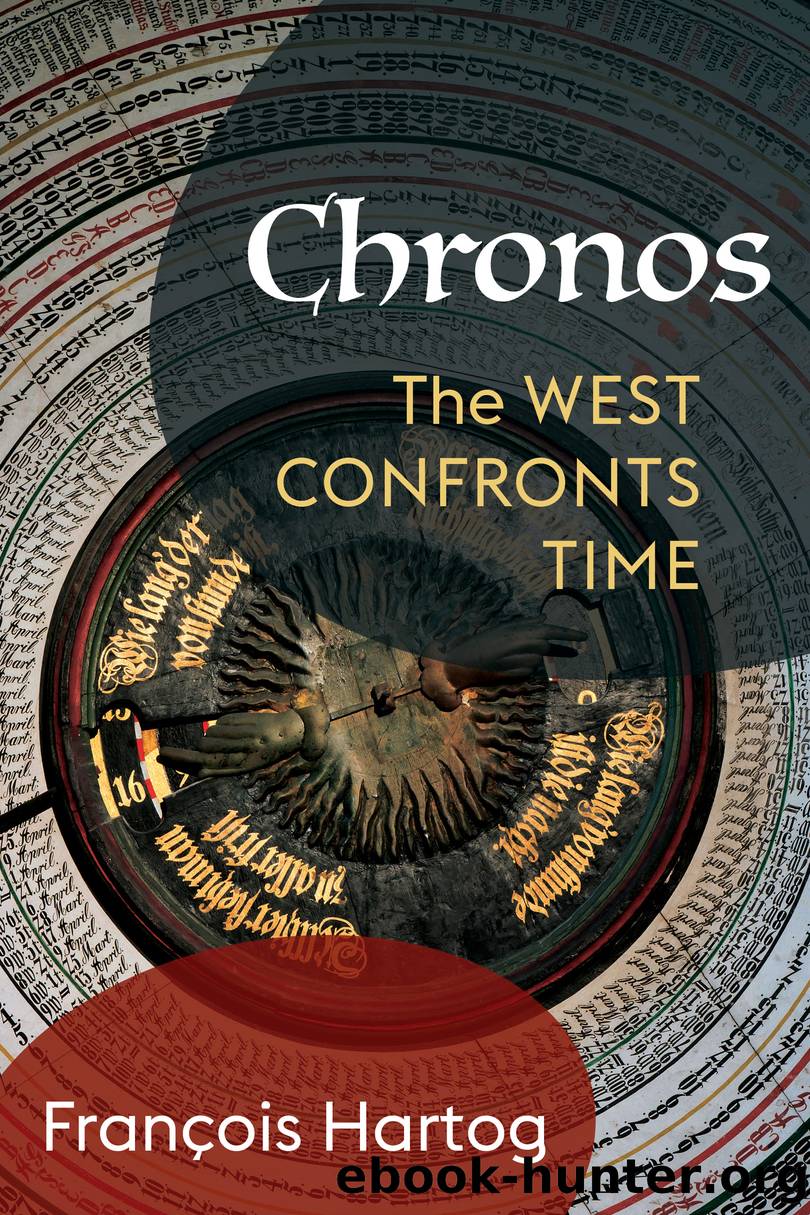Chronos: the West Confronts Time by François Hartog

Author:François Hartog
Language: eng
Format: epub
Publisher: Columbia University Press
âINDEFINITE PROGRESSâ
Once humanity has arrived at that seventh epoch, with all those happy perspectives opening ahead, Condorcet readily takes the baton, offering a vision of the âindefinite progress of the human mind.â16 No longer need there be any pretense of coordinating the advance of reason and theology. The French Revolution had come and gone, freeing Condorcet to censure the deadweight of superstition. No more condemnations will issue from the Sorbonne, a change from Buffonâs time. In another change, Condorcet set aside the time of nature, addressing only the seventh epoch, that of man. No great admirer of Buffon, Voltaire had explicitly declared in his article on history drawn up for the Encyclopedia that natural history was âinappropriately termed historyâ as it was âan essential part of Physics.â17 For him, the most philosophically rewarding history was that of âthe human mind,â an idea he applied to the century of Louis XIV. What he wrote was not âthe annals of his reign; it is rather the history of the human mind, examined in the century that sheds the most glory.â18 Condorcet could have seized on the moment when that history neared its climax, but instead he began with the very âfirst state of civilization.â19 Sent off toward physics, nature will not put in an appearance in the painting; the subject is the time of human beings.
What did he hope to show in writing A Historical Picture of the Progress of the Human Spirit? âThat nature has set no term to the perfection of human faculties; that the perfectibility of man is truly indefinite; and that the progressions of this perfectibility, from now onward independent of any power that may wish to halt it, has no other limit than the duration of the globe upon which nature has cast us.â20 Before his proscription drove Condorcet into hiding, he had time only to draw up a sketch of Picture. When Madame de Condorcet published the sketch in 1795, the Convention bought and distributed three thousand copies. Rehabilitated through that act, Condorcet was recognized as the official intellectual of the new regime. Since their earliest days, human beings have never ceased to advance toward perfectionâhistory shows this. The theory of sensationsâthe foundation of the idea of perfectibilityâsuffices to explain this, from that first mental faculty consisting of receiving sensations, initially simple and more elaborate with time. Clearly there is no longer any need for the overseer, the patron of the divine perfection toward which human beings, fallen and redeemed, have tended. Instead of accommodation we have sensations; rather than reformatio there is progress. Obstacles have hindered the march forwardâprejudice and superstition still do; yet the march never comes to a halt. âEverything tells us that we are now close upon one of the great revolutions of the human race.â21 For a wanted man with a price on his head, these were optimistic words indeed.
Condorcetâs Picture is conceived as âthe hypothetical history of a single people.â The progressions of that history are divided into nine âstages,â
Download
This site does not store any files on its server. We only index and link to content provided by other sites. Please contact the content providers to delete copyright contents if any and email us, we'll remove relevant links or contents immediately.
| Archaeology | Essays |
| Historical Geography | Historical Maps |
| Historiography | Reference |
| Study & Teaching |
Underground: A Human History of the Worlds Beneath Our Feet by Will Hunt(12022)
Sapiens by Yuval Noah Harari(5293)
Navigation and Map Reading by K Andrew(5111)
The Sympathizer by Viet Thanh Nguyen(4305)
Barron's AP Biology by Goldberg M.S. Deborah T(4096)
5 Steps to a 5 AP U.S. History, 2010-2011 Edition (5 Steps to a 5 on the Advanced Placement Examinations Series) by Armstrong Stephen(3687)
Three Women by Lisa Taddeo(3353)
Water by Ian Miller(3126)
The Comedians: Drunks, Thieves, Scoundrels, and the History of American Comedy by Nesteroff Kliph(3039)
Drugs Unlimited by Mike Power(2544)
A Short History of Drunkenness by Forsyth Mark(2233)
DarkMarket by Misha Glenny(2158)
The House of Government by Slezkine Yuri(2158)
And the Band Played On by Randy Shilts(2127)
The Library Book by Susan Orlean(2041)
Revived (Cat Patrick) by Cat Patrick(1963)
The Woman Who Smashed Codes by Jason Fagone(1929)
Birth by Tina Cassidy(1864)
The Absolutely True Diary of a Part-Time Indian by Sherman Alexie(1855)
